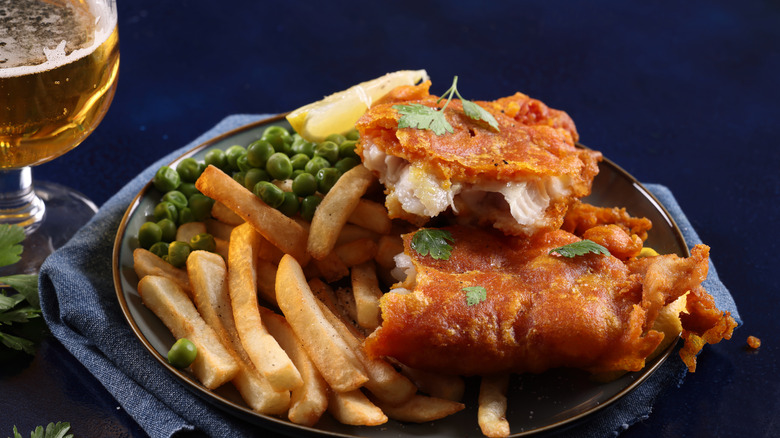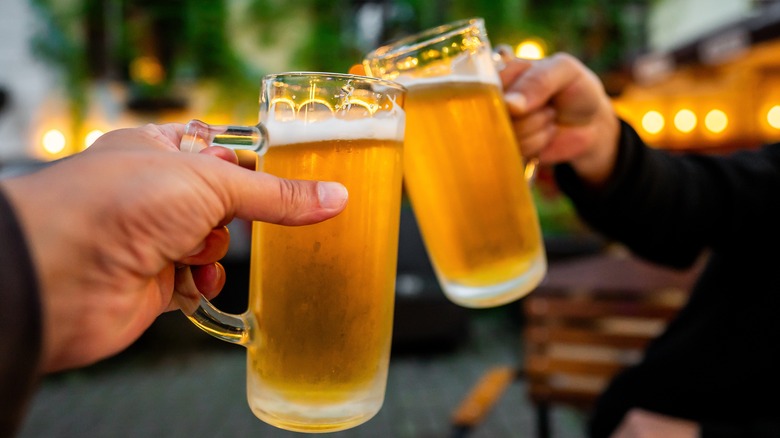Why Lighter Beers Reign Supreme For Battering Fish
Whether you're channeling Celtic culture with fish and chips or paying homage to Wisconsin custom with a Friday fish fry, achieving the perfect batter to encase a piece of fish is essential for an ideal texture. Many beer-battered fish recipes don't specify which beer to pour in, but choosing the right beer for your batter can affect both the taste and texture of the finished product.
The reason beer is added into a batter for fried fish is to add a light malty taste, which light lagers and pale ales will accomplish. Beers with strong, perhaps pungent, flavors, such as intense hops, bitterness, or sourness, will probably introduce unwelcome notes that will not complement the delicate fish. A light lager and a pale ale, on the other hand, have a more subtle and palatable flavor profile compared to their counterparts, meaning they won't overwhelm the dish's taste with the powerful flavors from other beers.
It's also best to pour in cold, carbonated beer. A chilled beer with carbonation adds the signature puff to the batter, ensuring a light and crispy texture that contrasts with the flaky and smooth fish. Many home cooks may reach for the old, back-of-the-fridge can for a beer-battered fish, but a fresh beer avoids a stale taste and guarantees ample carbonation.
Light lager versus pale ale -- and how to find them
The world of beer can be a tough one to enter. One day you think you're drinking a special craft beer, and the next you learn it's owned by some corporate conglomerate. There are so many intricacies and specificities to each beer, and the science behind the brewing process makes it all the more complex. However, as two staple types of beer, lagers and ales are not hard to differentiate.
The difference lies in the yeast, as they fermented with two different kinds. A light lager is a brewery's lager with a lower calorie content. These are easy to spot, as they will have the word "light" accompanying a brewery's name, such as Miller Light, Bud Light, and Coors Light. A pale ale gets its name from the color of the ale, which results from a certain brewing method that reduces a smoky, robust malt taste. They are easier to sip on than dark ales, hence why they fare well in beer-battered fish recipes. These are also easy to spot, as the producer will explicitly market them as pale ales. Even if you do mistake one for the other, both will work great for a fish fry.

